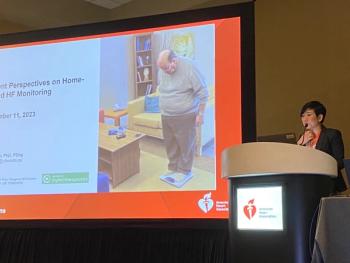
Digital hospitals aim to document better outcomes
Technology has been a part of the hospital landscape for decades, and hospitals have now begun to implement digital technology to improve communications between physician and nurses, lessen the likelihood of medication errors, and improve the quality of care, leading to better patient outcomes. Some are investing as much as 25% of their budgets to become digital.
"There is some form of technology in virtually every hospital in the country," says John Vitalis, a senior principal for the Noblis Center for Health Innovation, a Falls Church, Va.-based nonprofit technology organization. "It touches every department, both clinical and non-clinical."
A digital hospital transformation often includes making patient data immediately accessible to any pertinent clinician within the facility or in a remote location. Many new hospitals are building in all-digital platforms, and older hospitals are increasingly switching over. HHS estimates that health IT could save as much as $140 billion a year by 2014.
Older hospitals are finding money in their capital budgets to transform themselves into digital facilities one step at a time, perhaps starting with the implementation of a computerized physician order entry (CPOE) system, followed by electronic medical records (EMRs) and the adoption of clinical systems for the emergency department. While the cost for implementation varies, Vitalis says it is not unusual for hospitals to allocate between 20% and 25% of their capital budgets for digital technology.
DATA STAYS WITH THE PATIENT
The use of an integrated system allows providers to track many patients quickly, such as when a patient is transferred out of a critical care unit.
"With our paper-based system, very little of a patient's data in the critical care setting was available to the general care attending physician," says Lee Carmen, chief information officer and associate vice president for medical affairs for University of Iowa Health Care, which began implementing a third-party technology solution in January 2007. "They were unable to see the history of that patient, whether there was an incidence of cardiac arrest or what medications were administered."
Now, all information is electronically stored and stays with that patient from the critical care setting to general care to discharge to primary care.
On a real-time basis, the technology allows physicians and nurses to focus on patient care, rather than on constantly updating chart information, Carmen says. On an analytical basis, digital technology allows clinicians to conduct post-treatment reviews in a way that was almost impossible in a paper-based system.
"We are able to collect, aggregate and study the data along particular diagnosis-related groups or service lines," Carmen says. "We're analyzing what treatment protocols yield what clinical outcome successes over a substantial patient population and period of time. This is truly transforming and absolutely crucial to our success. This type of analysis cannot take place without a high degree of digitalization."
Newsletter
Get the latest industry news, event updates, and more from Managed healthcare Executive.

















































